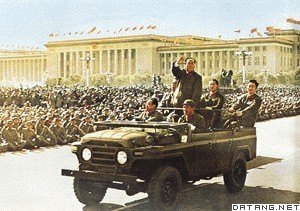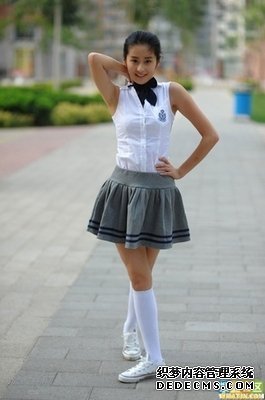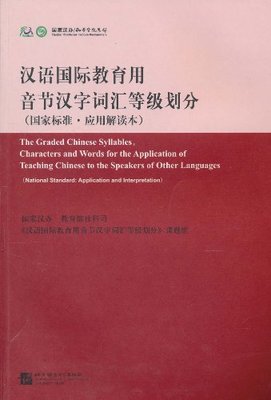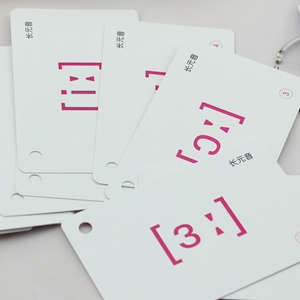
1. What was theCultural Revolution?
It was an era of massive socialupheaval which began on May 16, 1966. The revolution engulfed Chinafor 10 years and caused great suffering. It is often called the"Ten Year Catastrophe" by Chinese people. During the CulturalRevolution, radical groups struggled violently for power. Itresulted in beatings, terror, mass arrests and imprisonments, andthe deaths of millions. Many more people were sent to thecountryside to be "re-trained" as peasants and workers. China'seconomic growth and the education of a generation of Chinese peoplewas severely disrupted.
Professor William A. Joseph, of the Department of PoliticalScience, Wellesley College, said in China's Cultural Revolution:A brief Overview: "It was launched by Chinese Communist Party(CCP) chairman Mao Zedong to stem what he perceived as thecountry's drift away from socialism and toward the 'restoration ofcapitalism'. The campaign, which was euphorically described at itsinception by its progenitors as 'a great revolution that touchespeople to their very souls' and which inspired radical studentsfrom Paris to Berkeley, is now regarded as having been a terriblecatastrophe for the Chinese nation."
The Cultural Revolution was an attempt by Mao to secure Maoism asthe dominant ideology as well as a way to dispose of politicalrivals. Some historians believe that as early as the mid 1950s, heworried about the bureaucratisation of the party, ideologicaldegeneration, and social and economic inequalities that emerged. Hewanted to re-emphasise the Marxist ideals of the Chinese CommunistParty, which had come to power in 1949. He believed themiddle-class had not embraced communist ideas sufficiently, that itwas still encumbered by bourgeois ideals and that a "culturalrevolution" or Wúchan Jiçjí Wénhuà Dà Gémìng was needed. Maobelieved the Chinese people were soft and too "bourgeois" andneeded to be shaken up and reminded of the true proletarian idealsof Chinese communism.
The party finally renounced the Cultural Revolution in 1981.
Professor Joseph said: "Mao's decision to undertake the CulturalRevolution was strongly influenced by his analysis that the SovietUnion had already abandoned socialism for capitalism. The CulturalRevolution was also a power struggle in which Mao fought torecapture from his political rivals some of the authority andprestige that he had lost as a result of earlier policy failures.Furthermore, Mao saw the Cultural Revolution as an opportunity toforge a "generation of revolutionary successors" by preparingChina's youth to inherit the mantle of those who had originallybrought the CCP to power."
3. Who were the key players?
Mao Zedong. (December 26, 1893 to September 9, 1976): "TheGreat Helmsman" and leader of China's communist revolution. Mao isone of the major figures of 20th century history and one of theleading communist leaders during the Cold War. He is still reveredby many today in China as a great nationalist leader, who helpedunite China and end foreign interference. But his reputation inrecent years has also been seriously challenged. Mao has beencondemned for the severe famine which afflicted China during theGreat Leap Forward (1958 to early 1962) and for the great sufferingand upheaval caused by the Cultural Revolution.
A new book published last year The Unknown Mao by JungChang and Jon Halliday has re-ignited debate about Mao's conductand place in Chinese history by portraying Mao as a mass murderercomparable to Adolf Hitler and Joseph Stalin.
Mao launched the Cultural Revolution 40 years ago and it endedshortly after his death in 1976.
Lin Biao (December 5, 1907 to September 13, 1971): Linwas a distinguished military leader in the Sino-Japanese war andChinese civil war. After the founding of the People's Republic, hebecame political leader. In 1958, Lin was selected to the PolitburoStanding Committee and became a key figure in the early stages ofthe Cultural Revolution. He worked closely with Mao, creating acult of personality for him. In 1969 Lin gained great militarypower, becoming second only to Mao in the party. For a time he wasregarded as Mao's successor. However, Lin disappeared in 1971. Thecircumstances surrounding Lin's death remain unclear. Somehistorians believe Mao became discomforted with Lin's power riseand planned to purge him. At the same time Lin had planned amilitary coup. But the coup was bungled, forcing he and his familyto flee to the Soviet Union. Their plane is said to have crashed inMongolia on September 13, 1971 after running out of fuel, and allon board were killed.
Jiang Qing (March 1914 to May 14, 1991): She was thefourth wife of Mao and was famous for the forming of the "Gang ofFour" during the Cultural Revolution. Jiang emerged as a seriouspolitical figure during the movement when she criticised many partyleaders such as Liu Shaoqi. She at first worked closely with LinBiao but after Lin's death, she turned against him publicly. Jiangalso led the campaign against Deng Xiaoping, who was later tobecome China's paramount leader, in the mid 1970s. After Mao'sdeath, the notorious Gang of Four was blamed and the members werequickly arrested. At her trial in 1981, Jiang was the only memberof the gang to defend herself. She was sentenced to death withtwo-year reprieve in 1981. This was later commuted to lifeimprisonment. In 1991, she was released for medical reasons butcommitted suicide 10 days after her release.
Liu Shaoqi (November 24, 1898 to November 12, 1969): Hereplaced Mao as President of the People's Republic in 1959following the Great Leap Forward's failure. However, in 1966 Maolaunched the Cultural Revolution. Liu and Deng, along with manyother leading party officials, were denounced as "capitalistroaders". Liu was labelled a "traitor", "scab", "ChineseKhrushchev", "the biggest capitalist roader in the Party". In July1966 he was displaced as Party Deputy Chairman by Lin. By 1967 Liuand his wife Wang Guangmei were placed under house arrest inBeijing. Liu was removed from all his positions and expelled fromthe party in October 1968 and disappeared. Only after Mao's deathwas it revealed that Liu had been isolated in terrible conditions.He had died as a result of "medical negligence" in 1969.
Deng Xiaoping (August 22, 1904 to February 19, 1997): Heworked with Liu in the late 50s and early 60s to implement moderateeconomic policies but later fell out of favour with Mao, along withLiu. He was forced to retire from all his offices during theCultural Revolution.
He was sent to a rural area as a regular worker, where he spenthis spare time reading and writing. He and Liu were stripped of allpolitical power. When Premier Zhou Enlai was ill from cancer, Dengwas his choice as successor. Zhou managed to convince Mao to bringDeng back to politics in 1974. But after Zhou's death, Deng wasagain ousted from power by the Gang of Four.
His family suffered during the Cultural Revolution. His oldestson Deng Pufang was forced to jump from a four-storey building andparalysed from the waist down during an attack by a group of RedGuards in Cultural Revolution. Today, Deng Pufang is the chairmanof China's Disabled Persons' Federation.
Deng Xiaoping became Chinese premier in 1976. In 1978 he beganto introduce market reforms and moved the Chinese economy away fromthe doctrinaire communist ideology. These reforms ultimately sowedthe seeds for China's formidable economic growth today. He alsopursued an active foreign policy. Deng was involved in negotiationsover the return of Hong Kong to the mainland (although he died afew months before this occurred on July 1, 1997). In 1979, Dengundertook a historic visit to America.
Zhou Enlai (March 5, 1898 to January 8, 1976): China'spremier. He is not regarded as one of the major architects of theCultural Revolution but remained loyal to Mao during the CulturalRevolution. He played a vital role in improving China's foreignrelations during this period, notably during United StatesPresident's Richard Nixon's historical 1972 visit to China. He heldtalks with the US Secretary of State Henry Kissinger. Zhou was themost respected Chinese political leader internationally at thetime.
Historians generally regard Zhou as a moderate influence duringthe chaotic decade of 1966-1976 but he was not powerful enough tostop some of its worst excesses. Some have argued that Zhou triedto protect historical Chinese artifacts being destroyed by RedGuards. Nevertheless, Zhou remained a firm believer in the coreideals of Chinese Communism all his life.
Hua Guofeng (born February 16, 1921): He was Mao'sdesignated successor. After Mao's death, he brought the CulturalRevolution to an end and arrested the Gang of Four. However, he wasdenounced with his "Two Whatevers" policy ("We will resolutelyuphold whatever policy decisions Chairman Mao made, andunswervingly follow whatever instructions Chairman Mao gave"),ousted by Deng a couple of years later and forced to have an earlyretirement.
4. What was Gang of Four?
The Gang of Four was a group of political leaders including MaoZedong's wife Jiang Qing and her three political allies (YaoWenyuan, Zhang Chunqiao and Wang Hongwen) in the CulturalRevolution. They attempted to seize control of China's Communistgovernment from more moderate leaders. They were finally arrestedin 1976, after Mao's death.
5. What was the "Big-Character Poster"?
These posters are handwritten and wall-mounted with large-sizedChinese characters. They are often used as means of protest, forpropaganda or communication. Big-character posters have been usedin China since imperial times but they became more common whenliteracy rates rose after the 1911 revolution. They have also beenincorporated into low-circulation newspapers, and into pressarticles, and pamphlets intended for public display.
A key trigger of the Cultural Revolution was the publication ofa big-character poster written by a young teacher at PekingUniversity in 1966. It denounced school and municipal leaders. Itgained Mao's attention several days later. Mao gave the poster avery positive endorsement. He ordered it to be broadcast nationallyand published it in People's Daily. Since then,big-character posters were ubiquitous in Cultural Revolution.
6. Who were the Red Guards?
Red Guards in the Cultural Revolution were frontline "fighters".Most of them were youngsters in their mid-teens, encouraged by Maoto protect the progress of the Chinese Communist Party against whathe regarded as "evil forces" such as imperialism and corruption,"bourgeois ideals" and those within the Communist Party who werebelieved to be deviating from Marxist ideals.
7. What was Little Red Book?
The Little Red Book is a collection of quotations of from Mao. Thebook, publishing quotations taken from his past speeches orpublications, was printed in pocket-size. It became very famous andwas widely read, debated and discussed in the West.
8. What was "Down to the Countryside Movement"?
In December 1968, Mao began the "Down to the Countryside Movement",which lasted for 10 years. Young intellectuals living in citieswere ordered to the countryside or rural areas. In 1968, almost alljunior and high school students all over China joined the movement.It is estimated there were about 16 million young intellectualsoverall during the Cultural Revolution. In the late 1970s, theywere finally allowed to return to their home cities.
9. What was happening to China's foreign relations duringthis time?
Despite the suffering internally in China, externally relationswith the United States and other countries improved and Cold Wartensions started to ease. On September 29, 1972, China and Japanestablished diplomatic relations, ending nearly 80 years of enmityand friction between the two sides.
In 1971 Nixon announced his visit to China, which shocked theworld. In China, Lin opposed the summit meeting but he soon died.In 1972, Nixon travelled to Beijing, Hangzhou and Shanghai on anhistoric visit which greatly improved Sino-US relations. The US andPeople's Republic of China announced on December 15, 1978, that thetwo governments would establish diplomatic relations on January 1,1979.
10. Why did the Cultural Revolution end?
On January 8, 1976, Zhou died of cancer. On April 5, China's QingMing Festival, a traditional day for Chinese to mourn the dead,about two million people gathered in Tiananmen Square. Thisassembly turned into a protest against the Gang of Four. The Gangof Four ordered police to enter the area, clearing the wreaths andmessages and expelling the crowds. On September 9, 1976, Mao diedafter choosing Hua Guofeng as his successor. Hua had been widelyconsidered to lack political skills, ambition and pose no threat tothe Gang of Four. But under the influence of prominent generalslike Ye Jianying and the military, along with Deng, Hua ordered thearrest of the Gang of Four. This effectively ended the CulturalRevolution.
11. How many people died in Cultural Revolution?
Estimates of the death toll in the 10 years of Cultural Revolutionvary from one million to 20 million. Writer Jung Chang, in her bookMao, the Unknown Story, published last year, claims morethan three million died. However, the true figure may never beknown as many deaths went unreported or were actively covered up bythe police or local authorities.
12. What was the impact on Hong Kong?
The Cultural Revolution spilled over into Hong Kong, resulting insome of the territory's worst riots. Leftists challenged theColonial Government; workers went on strike, fake or real bombswere set off. As a consequence, 51 people died and more than 800were injured. The Royal Hong Kong police generally maintained orderin the territory and prevented the riots becoming too violent.
13. What was the impact on Asia?
It probably helped intensify cold war tensions and also helpedencourage the greater spread of Marxist ideologies in othercountries - such as Cambodia and Vietnam. In Nepal, the CulturalRevolution introduced a new radical political ideas which still arestill making a major impact today.
14. What were its social and economic consequences?
During the Cultural Revolution, China's economy stagnated. Peoplewith education and skills who could have helped China's economyprogress (particularly after the dislocation caused during theGreat Leap Forward) were often persecuted politically. China lostof a decade of potential economic development. The railway systemwas also in turmoil. The period was especially tragic for Chinaculturally - countless antiques, ancient buildings, artifacts,arts, books and paintings were destroyed by the Red Guards.Artists, scholars, historians and writers also suffered and theirwork was disrupted.
The education system was thrown into turmoil. College entranceexam were cancelled and only resumed after Deng came to power.Thousands were forced to work as peasants and w orkers in thecountryside. Many missed out on formal education and theirsuffering was later recalled in many literary works.
Human rights were laid waste. People were accused of being"traitors", "spies" or "feudalists". They were forced to walkthrough the streets naked, were whipped publicly, or forced, somereported, to squat in the street for hours and were often made towear humiliating placards. Many deaths occurred in police custodybut these were often covered up as "suicides".
China's image overseas also suffered and an important decade ofpotential economic reform (which was started by Liu and Deng afterthe Great Leap Forward in the late 1950s and early 1960s) waslost.
15. Key dates in the Cultural Revolution
 爱华网
爱华网

